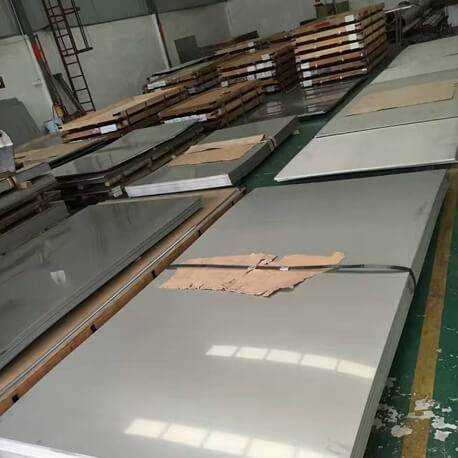A240 a203gr.a metal 15pc knife block
Tags: A203GR.A,ASTM A203GR.A,A203GR.A Steel Plate, A203GR.A steel factory, A203GR.A adopt standard, A203GR.A Heat treatment, A203GR.A Technical delivery condition, A203GR.A Chemical, A203GR.A Mechanical property, A203GR.A Price, A203GR.A CEV, A203GR.An Impact degree, A203GR.Impact energy, A203GR.A Supplier, A203GR.A Specification, A203GR.A property, Material A203GR.A N, A203GR.A Material, ASTM A203GR.A, A203GR.A Steel, A203GR.A Yield, A203GR.A plate, A203GR.A HIC, A203GR.A NACE MR0175, A203GR.A ISO 15156, A203GR.A NACE MR0103, A203GR.An SSC
A240 a203gr.a metal 3rd quarter 2018
Below ~1700 km, there may be a restricted acceleration of slabs as a result of lower viscosity on account of inferred mineral part changes till they approach and at last stall on the core-mantle boundary. Here the slabs are heated up by the ambient warmth ASTM A203GR.A Nickel-Alloy steel plate and usually are not detected anymore ~300 Myr after subduction. Subduction zones are sites of gravitational sinking of Earth’s lithosphere (the crust plus the highest non-convecting portion of the upper mantle). Subduction zones exist at convergent plate boundaries where one plate of oceanic lithosphere converges with one other plate.
A240 a203gr.a steel plate 1/4
The one exception is the Pacific plate, which lies beneath the Pacific Ocean. Not only is this the only main tectonic plate that’s primarily underwater, it is also the biggest, spanning over 100 million square kilometers. Seismic tomography has helped detect subducted lithosphere, slabs, deep in the mantle the place there are not any earthquakes. About 100 slabs have been described by way of depth and their timing and location of subduction. The nice seismic discontinuities within the mantle, at 410 km (250 mi) depth and 670 km (420 mi), are disrupted by the descent of cold slabs in deep subduction zones.
Yin suggests that meteorite impacts might have contributed to subduction initiation on early Earth. So, you’ll be able to see beneath that the North and South American plates comprise oceanic crust, even though they are named for the primary continent they embody. In fact, six of the seven main tectonic plates are named after the continents they comprise.
- So, you possibly can see beneath that the North and South American plates contain oceanic crust, even though they are named for the main continent they encompass.
- Although the method of subduction as it happens right now is fairly nicely understood, its origin remains a matter of dialogue and continuing research.
- Both models can ultimately yield self-sustaining subduction zones, as oceanic crust is metamorphosed at nice depth and turns into denser than the surrounding mantle rocks.
- Furthermore, subduction is likely to have spontaneously initiated sooner or later in Earth’s historical past, as induced subduction nucleation requires existing plate motions, although an unorthodox proposal by A.
What are standard plate sizes?
Size and type Bread and butter plate: small (about 6–7 inches (15–18 cm)) for individual servings. Lunch or dessert plates (typically 9 inches (23 cm)) Dinner plates: large (10–12 inches (25–30 cm)), including buffet plates, serving plates which tend to be larger (11–14 inches (28–36 cm))
A240 a203gr.a steel plate 4×8 price

Some subducted slabs appear to have difficulty penetrating the most important discontinuity that marks the boundary between higher mantle and lower mantle at a depth of about 670 kilometers. Other subducted oceanic plates have sunk all the way in which to the core-mantle boundary at 2890 km depth. Generally slabs decelerate during their descent into the mantle, from sometimes several cm/yr (as much as ~10 cm/yr in some circumstances) on the subduction zone and within the uppermost mantle, to ~1 cm/yr in the lower mantle. This leads to both folding or stacking of slabs at these depths, visible as thickened slabs in Seismic tomography.
The descending slab, the subducting plate, is over-ridden by the forefront of the opposite plate. The slab sinks at an angle of approximately twenty-5 to forty-five degrees to Earth’s floor. This sinking is driven by the temperature difference between the subducting oceanic lithosphere and the encompassing mantle asthenosphere, as the colder oceanic lithosphere has, on average, a greater density.
A240 a203gr.a steel plate 70mm
Although the process of subduction because it happens at present is fairly well understood, its origin remains a matter of debate and continuing examine. Both fashions can eventually yield self-sustaining subduction zones, as oceanic crust is metamorphosed at great depth and becomes denser than the surrounding mantle rocks. Furthermore, subduction is more likely to have spontaneously initiated at some point in Earth’s history, as induced subduction nucleation requires existing plate motions, though an unorthodox proposal by A.
